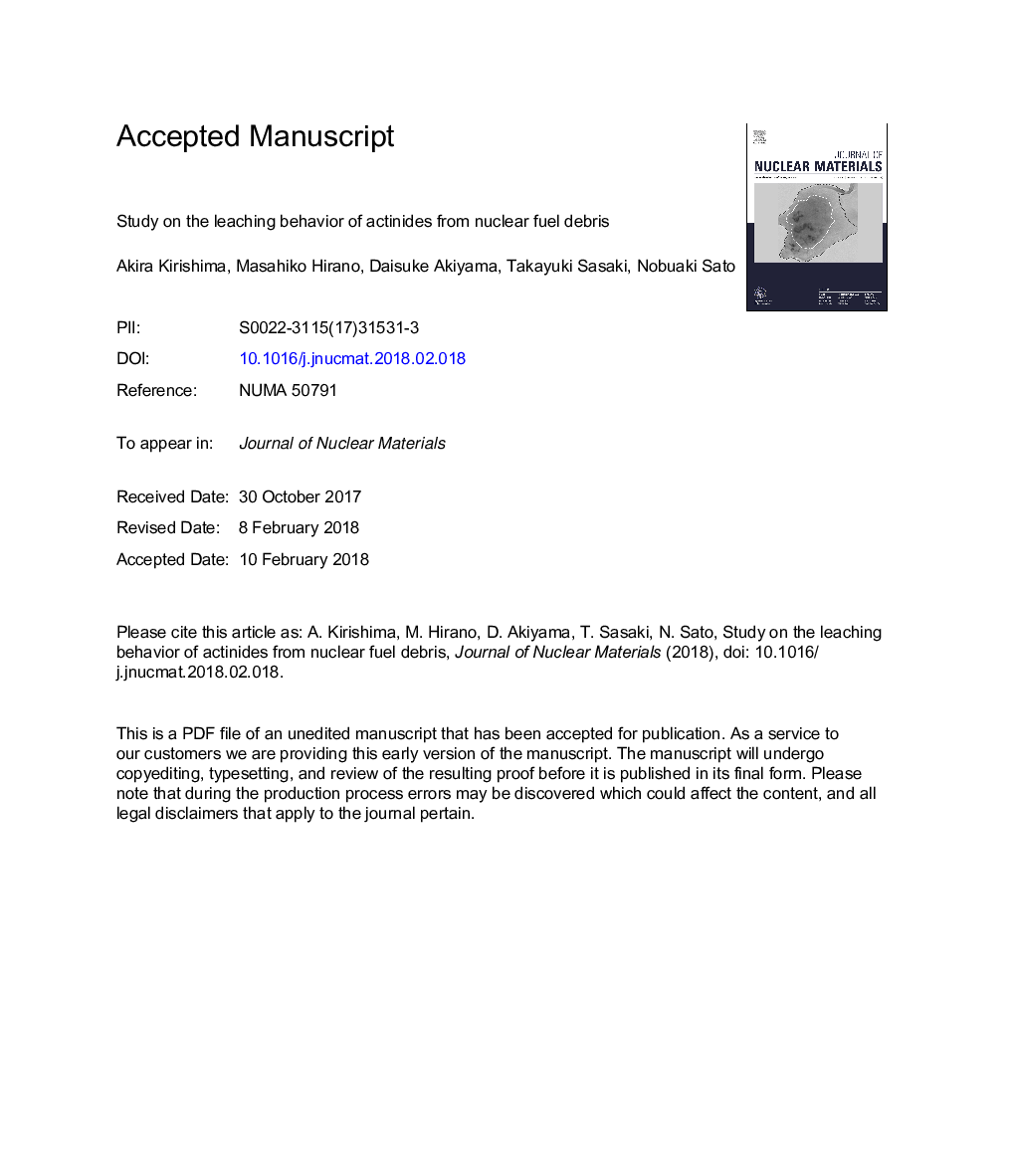| Article ID | Journal | Published Year | Pages | File Type |
|---|---|---|---|---|
| 7963363 | Journal of Nuclear Materials | 2018 | 32 Pages |
Abstract
For the prediction of the leaching behavior of actinides contained in the nuclear fuel debris generated by the Fukushima Daiichi nuclear power plant accident in Japan, simulated fuel debris consisting of a UO2-ZrO2 solid solution doped with 137Cs, 237Np, 236Pu, and 241Am tracers was synthesized and investigated. The synthesis of the debris was carried out by heat treatment at 1200â¯Â°C at different oxygen partial pressures, and the samples were subsequently used for leaching tests with Milli-Q water and seawater. The results of the leaching tests indicate that the leaching of actinides depends on the redox conditions under which the debris was generated; for example, debris generated under oxidative conditions releases more actinide nuclides to water than that generated under reductive conditions. Furthermore, we found that, as Zr(IV) increasingly substituted U(IV) in the fluorite crystal structure of the debris, the actinide leaching from the debris decreased. In addition, we found that seawater leached more actinides from the debris than pure water, which seems to be caused by the complexation of actinides by carbonate ions in seawater.
Keywords
Related Topics
Physical Sciences and Engineering
Energy
Nuclear Energy and Engineering
Authors
Akira Kirishima, Masahiko Hirano, Daisuke Akiyama, Takayuki Sasaki, Nobuaki Sato,
